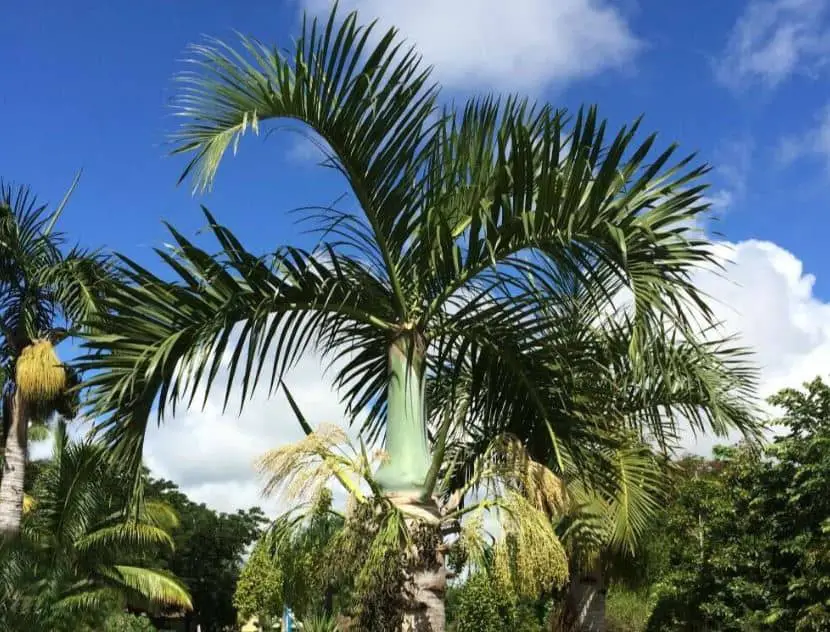Plant lovers often seek tropical flourishes to add to their gardens or interior decor. Spindle palms offer one of the most tropical appearances you can get, and their simplicity of maintenance and steady growth make them a trouble-free addition. If appropriate light, space, and freezing temperatures are not a problem, this endangered plant is often grown and thrives in various environments. Find how to take care of a spindle palm plant so you can welcome this unusual houseplant.

Spindle Palm Plants
Slow-growing spindle palms (Hyophorbe verschaffeltii) may be grown in the ground or containers. The Indian Ocean’s Mascarene Islands are home to the plants’ natural habitat. The name “spindle palm” comes from the trunk’s ridges resembling a spindle and the form of the plant, which is narrow at the base, spreads, and then constricts when fronds develop.
A true palm, the spindle palm may reach heights of up to 25 feet when exposed to direct sunlight. The pinnately complex, up to 10 foot (3 m) long fronds with a foot-long (31 cm) petiole. When the leaves ruffle in the wind, this produces an attractive and appealing arching appearance. The crown shaft is a thin, smooth green crown from which leaves grow. The stem is light grey, swells towards the middle, and then narrows again. The orange to meaty red fruits, just about an inch (2.5 cm) in diameter, develop from the creamy inflorescences, which may grow up to 2 feet (61 cm) long in clusters.
Sandy, well-drained soil, and full light are ideal growth conditions for spindle palms in their natural environment. In a grove, they often gather in a group on their own. These plants look magnificent in a similar landscape shape or as lone examples in pots or garden beds. Spindle palms may thrive in pots inside or in greenhouses, even in places where the ideal conditions for their outdoor growth do not exist.
How to Grow Spindle Palms
Spindle palms are advised as an outdoor plant for USDA zones 10 and below, down to 9b. In regions with little frost, place them in a large pot on wheels so you may relocate the palm to a warm location if a cold spell is impending.
Container plants need yearly feeding, strong sunshine, constant hydration, and adequate drainage. The two nutrients most often required in higher doses are potassium and magnesium. The fronds will show signs of potassium shortage by developing huge orange patches. A yearly fertilizer with a high potassium ratio once a year in the early spring is advised for spindle palm trees.
Topsoil or peat moss should be put into the planting hole before planting in-ground plants. Spindle palm trees may be grown on the home’s bright western or southern border to shield them and provide them with the desirable lighting. To allow the fronds space to develop, place them 4 feet (1 m) away from the house.
What to Do About a Spindle Palm
Spindle palms are surprisingly simple. Once they are established, they can endure short droughts and salty environments. Even though they grow so slowly and are not technically self-cleaning, you will only sometimes need to cut off dead fronds.
An important component of the plant’s care is protection against the cold. When the frost comes, construct a frame out of chicken wire and cover it with that material or even an old blanket. A few inches (8 cm) of organic mulch around the root zone also benefits the plants. But be cautious to avoid moisture buildup and fungal problems by leaving a few inches (5 cm) of space around the stem free of mulch.
During the growth season, water once per week; otherwise, this hardy plant may withstand significant neglect and still stand magnificent sentry to your environment.

